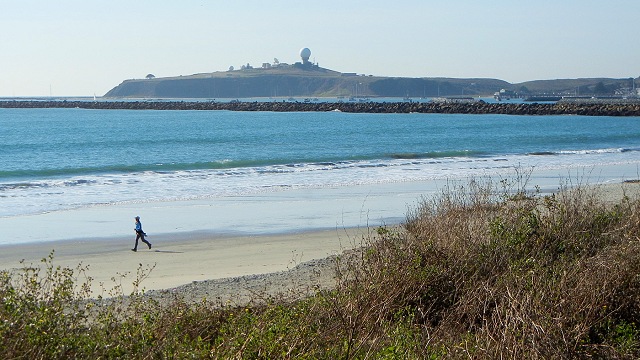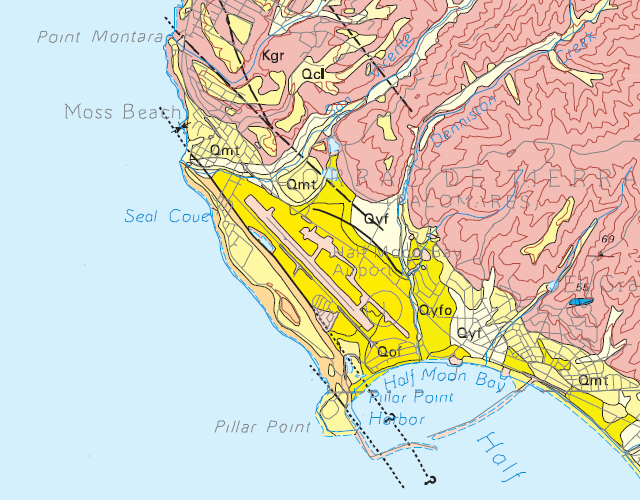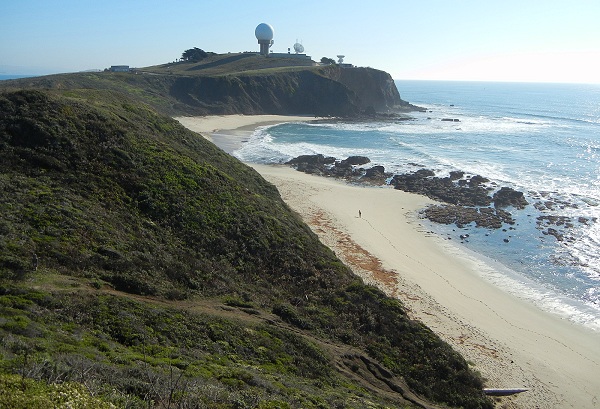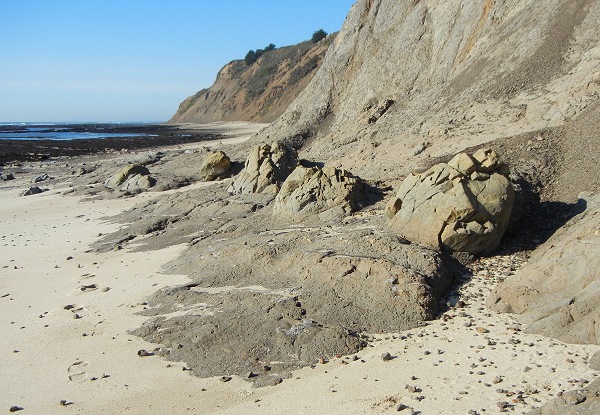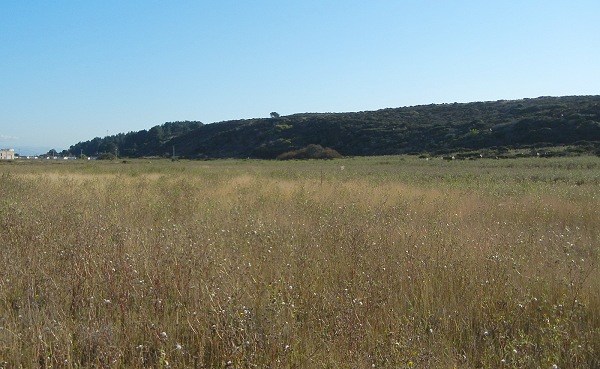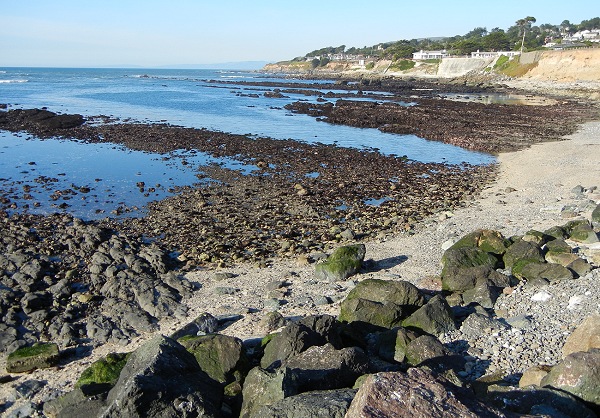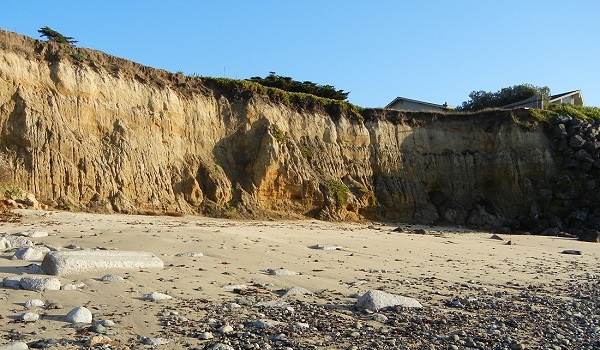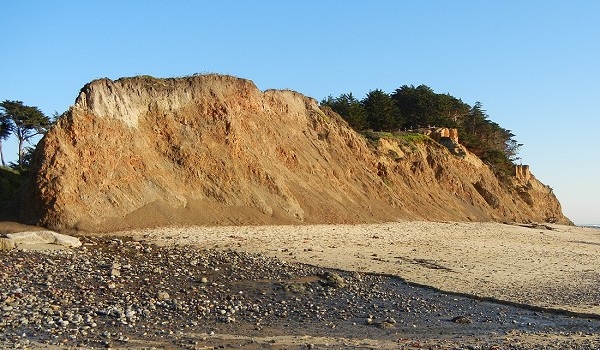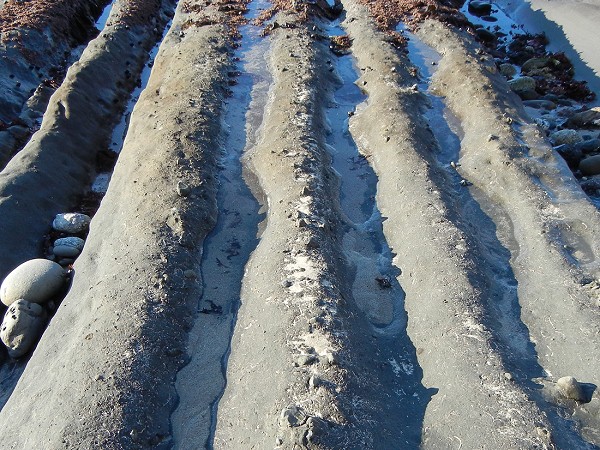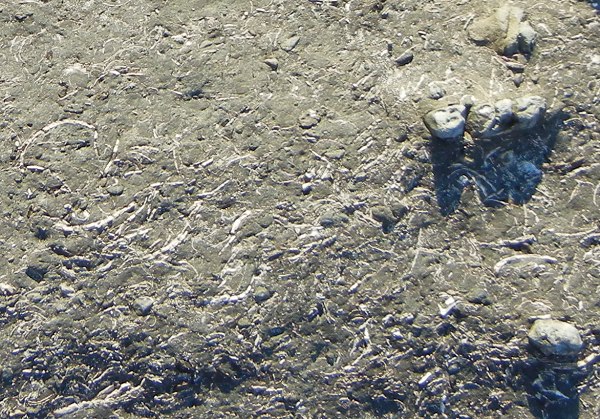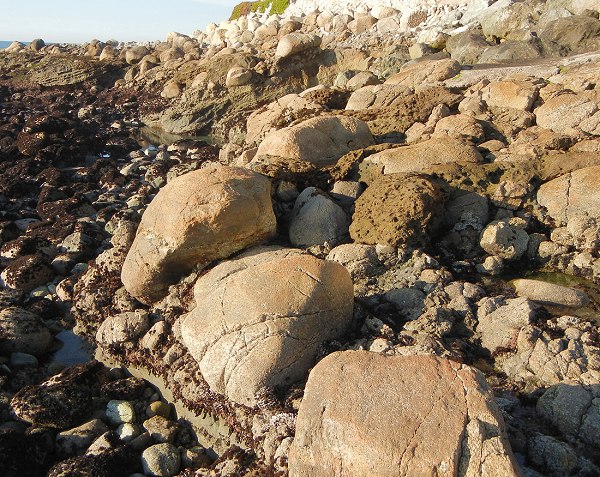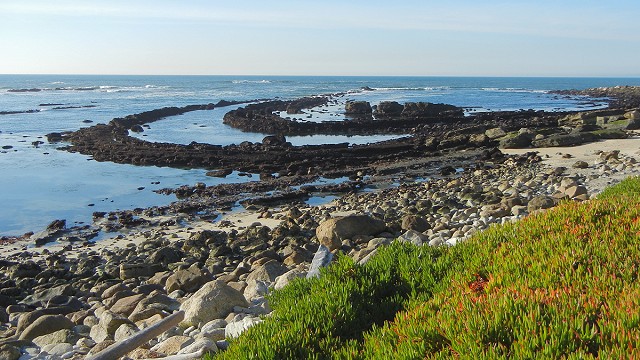Pillar Point, topped by its military base, is the bulwark of Half Moon Bay on the San Mateo County coast. You may be familiar with it as the nearest place to the great Mavericks surf break. Its abrupt appearance along the shoreline, and the linear hill extending from it to the north, are geomorphic oddities that gain significance when the geologist checks them out in detail. Here's what the area looks like on the Geologic Map of San Mateo County:
The pink area is granite and related rocks of the Montara Mountain block, which I showed you in August. Those rocks are something like 80 million years old. The ridge between Pillar Point and the town of Moss Beach is made of something else, though: the much younger Purisima Formation, shown in beige. Between them is a thick black line denoting a good exposure of the San Gregorio fault, which we saw a few months ago at its other end, at Point Año Nuevo. The units labeled "Q" are geologically recent sediments and not rocks at all—Qmt represents marine terraces like those at Point Año Nuevo and elsewhere.
The coastline here and parts of the ridge are part of the Fitzgerald Marine Reserve, a county park with a dedicated group of supporters at fitzgeraldreserve.org. When you visit, leave your rock hammer at home. Oh, and check the tides first, too.
At the reserve's south end is a trail leading over the ridge to the beach. Here we get our first look at the extensive wave-cut platform, exposed at low tides, that makes Fitzgerald such a destination for tidepoolers as well as surfing fans.
